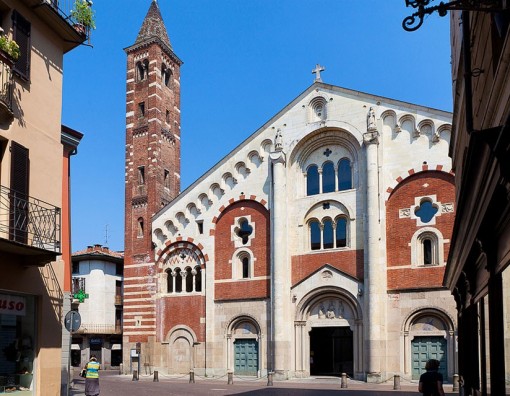At Cella Monte Alta in the heart of the Ghenza Valley, park in the center in the courtyard of the headquarters of the “Pietra da Cantoni Ecomuseum”, presided by Claudio Castelli. Well worth visiting is the beautifully restored ancient Palazzo Volta, ceded to the parish, with its colonnade over two floors which takes us back in time.
We go down the 'infernot’, the largest in the village, it'll take bottles to furnish ... Climbing up to the first floor from the loggia overlooking the tower of the village, where curiously there is small window from where one could spy on the adjacent parish church. The views of the nearby Rosignano are extraordinarily framed by palm trees. Back to the main street to taste “cabatine” (a bread roll made from barley), at the bakery Brambilla and to take a photo of the painted ceilings (another peculiarity of this small but great country to be cherished quickly, thinking about the other points of interest still to see).
Then a stroll downhill ( the return is uphill ...) to Casaccia, where we are met by Margherita Rava at the entrance of the village, we go down to the cellar and then to the 'infernot’ with carved tables lit by a marquis chandelier. In the dining room a beautiful ceiling depicting scenic views and various animals.
Then by car, drive up to the church of San Bartolomeo to visit the infernot Then up (by car) to the church of San Bartolomeo to visit the infernot with access bowed by Elsa Zai Bellero (wines Ca 'Nova ) , leading to the cellar where there is a press where “mulette” are hung (a type of salami which we discovered in our first Guide Camino done with Aldo Timossi) On the return we go to the old fortified house of Arditi. At the entrance images of the Italian Risorgimento (Garibaldi, Kossuth ...) then one sees the beautifully frescoed ceiling; on a fireplace on the first floor is a print by Cella Monte of an old acquaintance (Laura Rossi). Last (for us) Casa Piero Mazza’s infernot. It's beautiful: deep (a three flight staircase) and precise, polished, dated 1886, dug over three winters, the bottles are on bleachers, the table is oval, carved. A marvel.
Luigi Angelino









